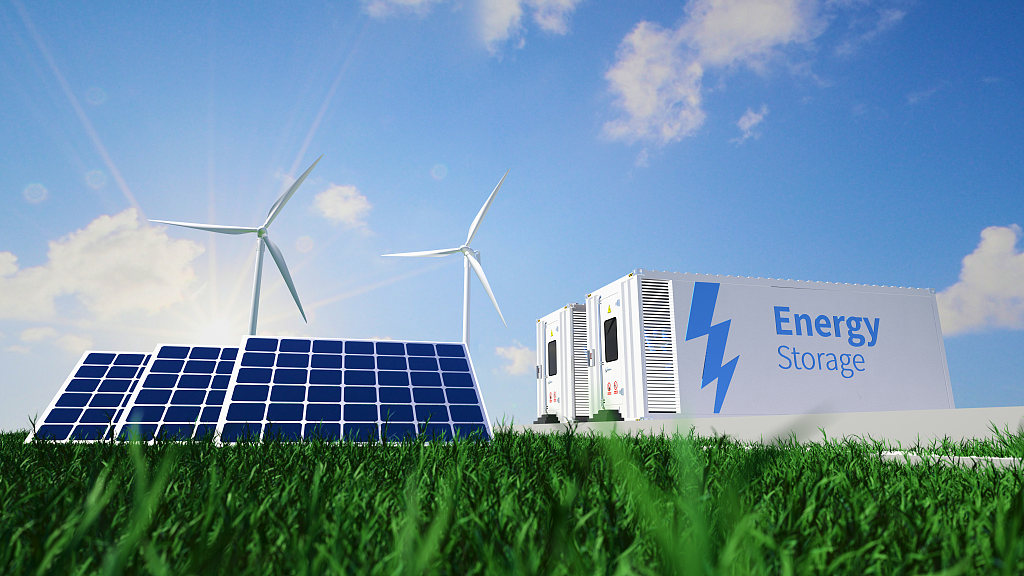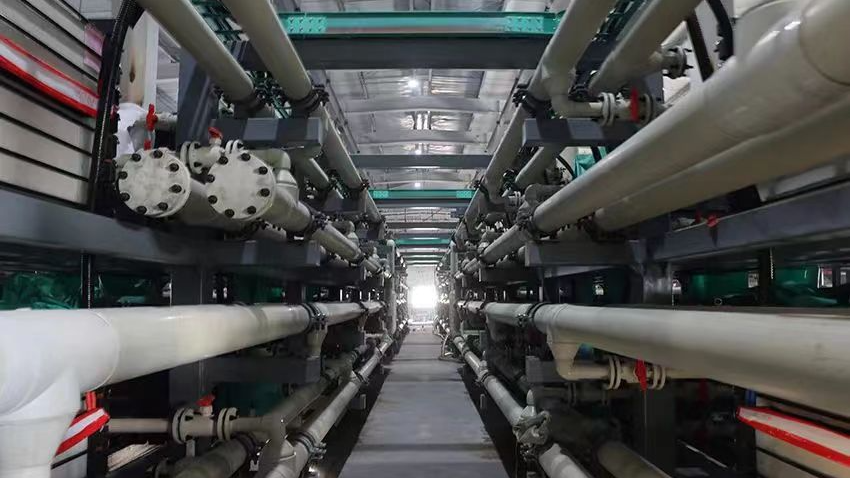
As of the end of 2022, the total installed capacity of energy storage projects in China reached 59.4 GW. /CFP
As of the end of 2022, the total installed capacity of energy storage projects in China reached 59.4 GW. /CFP
Developing new energy storage technology is one of the measures China has taken to empower its green transition and high-quality development, as the country is striving for peak carbon emissions in 2030 and carbon neutrality in 2060.
China's 14th Five-Year-Plan (2021-25) on renewable energy development targets a 50 percent increase in renewable energy generation and a 30 percent decrease in the per unit cost of energy storage by 2025.
The power generation of renewable energy, such as wind and solar, can be intermittent due to natural variations. How to store them properly to avoid waste and aid power demand at peak hours has been a hot question to tackle in the industry.
With the world's largest station for iron-chromium flow battery starting a test run of 168 hours on Tuesday, the country has taken a step further in advancing new energy storage.
Tech revolution: traditional vs. new
New energy storage refers to energy storage using new technologies, such as lithium-ion batteries, liquid flow batteries, compressed air and mechanical energy.
As of the end of 2022, the total installed capacity of energy storage projects in China reached 59.4 gigawatts (GW), with pumped storage taking up to about 77 percent and new energy storage accounting for about 22 percent, according to Chen Haisheng, a researcher from the Institute of Engineering Thermophysics under the Chinese Academy of Sciences.
"Pumped storage is currently the mainstream technology, but it can't fully meet China's growing demand for energy storage," Chen said in an interview with China Media Group (CMG).
A pumped storage facility usually requires a configuration of two water reservoirs at different elevations, thus taking up precious land resources to meet the demand. In addition, pumped storage is also more suitable for long-term large-scale energy storage application scenarios.
Read more: World's fastest rotor for pumped storage hydropower plant in operation
"And that's where the opportunities stand for new energy storage," Chen said.
New energy storage to boom
New energy storage is an important foundation for building a new power system in China, enjoying the advantages of fast response, flexible configuration and short construction periods.
"We believe that its (new energy storage) installed capacity is going to surge and will see rapid development in the sector," Chen said.

China's megawatt iron-chromium flow battery energy storage demonstration project in north China's Inner Mongolia Autonomous Region, February 28, 2023. /State Power Investment Corporation Limited
China's megawatt iron-chromium flow battery energy storage demonstration project in north China's Inner Mongolia Autonomous Region, February 28, 2023. /State Power Investment Corporation Limited
The megawatt iron-chromium flow battery energy storage project in north China's Inner Mongolia Autonomous Region uses a new energy storage application technology utilizing the chemical properties of iron and chromium ions in the electrolyte.
Such mega energy storage stations can help shave peak and modulate frequency for the power system, enabling smooth grid operation, Li Jianwei, chief engineer of the State Power Investment Corporation Limited, told CMG.
"Users can get compensated on the peak-valley tiered rate system for electricity as they use more electricity stored from valley time, and valley time electricity is charged at cheaper price," Li said.
As of the end of 2022, lithium-ion battery energy storage took up 94.5 percent of China's new energy storage installed capacity, followed by compressed air energy storage (2 percent), lead-acid (carbon) battery energy storage (1.7 percent), flow battery energy storage (1.6 percent) and other technical routes (0.2 percent).
Besides Inner Mongolia, Shandong, Guangdong and Hunan provinces and Ningxia Hui Autonomous Region are regions ranking in the first-tier group of installing new energy storage capacity in China.